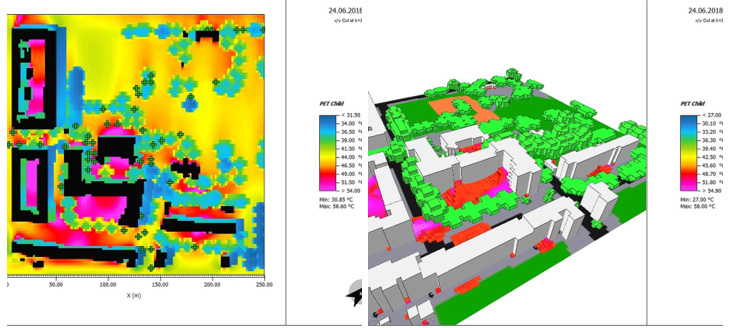A lot has been written and talked about the steadily worsening urban heat island effect and the threats it holds to human health.
It is a phenomenon that is widely discussed and researched, however, a similar observation that affects those most precious to us at a time when we believe them to be completely safe – our children while they are at school – does not get as much attention: the ‘schoolyard heat island’.

This effect can be observed as an absence of shading structures and a large proportion of artificial surfaces, as it is common in most school yards, can lead to high thermal dissatisfaction for children playing outside during recess.
In a typical school setting consisting of a building and adjacent school yard, the PET on a warm summer day with temperatures between 22 and 34 °C is calculated for a 12-year-old girl with a height of 1,50 m and a weight of 42 kg. At 10 AM and noon – times when breaks take place and the children are meant to clear their minds from the lessons and regain some energy for the rest of the school day – the PET values in the school yard show very high values of up to 58 °C, as can be seen in the pictures below. This indicates extremely uncomfortable conditions for the kids playing in these areas, caused by the high exposure to solar radiation and lower wind speed values due to wind flow disruption caused by the surrounding buildings.
With recess being taken at times of high sun intensity and the overall higher sensitivity of children’s skin to UV radiation exposure, it is time to rethink the form of the urban public schoolyard. Shaded areas as a result of an implementation of large awnings and trees and the use of natural surfaces such as wood chips and grass can help to mitigate the effects of the ‘schoolyard heat island’, making it possible for children to use their break time to socialize with one another, destress, and enjoy being outside in a comfortable environment.


